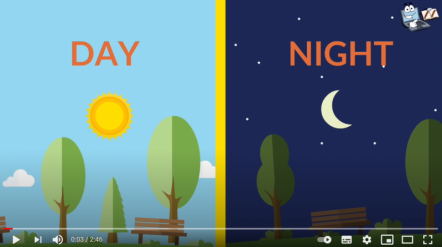You are here:
- Home »
- Nature of science »
- Nature of science teaching activities »
- Using online models to understand the phases of the Moon »
- 2. The Sun and the Earth – a view from space
2. The Sun and the Earth – a view from space
What causes the pattern of days and nights?
Day and night cycle – Watch the video.
Starter questions
- What causes daytime?
- What causes night-time?
- How long does it take for the Earth to rotate once?
Extra questions
- What is the difference between the Earth’s rotation and the Earth’s orbit?
- Why can’t we see the stars during the day?
- How long does it take for the Earth to make one full orbit of the Sun?
More information
- The Earth spins or rotates on its axis once every 24 hours. This is called a solar day. Living things are used to this cycle on the Earth.
- We can also measure the Earth’s rotation against the stars. The Earth moves along its orbit around the Sun and spins on its axis at the same time. Because of this, it only takes 23 hours and 56 minutes for the Earth to complete one turn using the stars as the reference point. This is called a sidereal day. It is what astronomers use.
- The Earth completes one full orbit of the Sun every 365.25 days. Once every four years, we have to add an extra day to our Earth calendar to make up for the extra quarter days. We call this year a leap year.
- A planet moving in space is like a ball – it has no ‘up’ or ‘down’. Direction is only meaningful from an observer’s view, and the observer can be … anywhere!
- The stars are still there in the daytime, but we cannot see them because the Sun, our nearest star, is so bright.
Credits: Published by Learning Media Limited for the New Zealand Ministry of Education. © Crown 2003. All rights reserved. Enquiries should be made to the publisher www.learningmedia.co.nz. Interactive web design by Boost New Media and The Pixel Pump.


